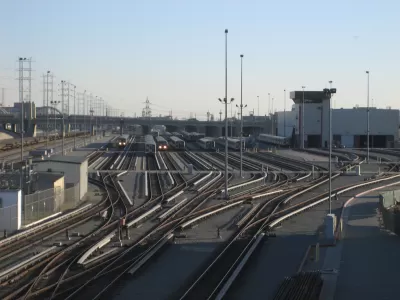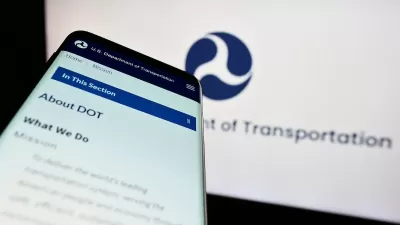Politico explores some of the projects that could be scrapped as a result of being located in sanctuary cities.

Infrastructure projects throughout the country are in limbo due to Trump's executive order barring jurisdictions that refuse to cooperate with federal immigration officials from receiving federal funds. In Politico, Tanya Snyder profiles a series of the projects that could be affected, and explores how cities are responding to the threat.
"Virtually all of the heavily Democratic urban areas declaring themselves ‘sanctuaries’ have accepted or are seeking hundreds of millions of federal dollars to advance major transportation projects," she notes.
Though billions of dollars' worth of infrastructure could be at stake, it's unclear what is going to happen next. There is not yet a list of specific cities or projects whose funding will be cut off. Nor does there appear to be a plan for distributing funds to regional bodies that might include sanctuary cities—like metropolitan planning organizations (MPOs), transit agencies, and airport or port authorities.
Withholding funds from major cities could also have serious regional impacts.
Considering that Boston, New York, Chicago, San Francisco, Los Angeles and Washington, D.C., have all declared themselves sanctuaries for undocumented immigrants, Trump’s reprisals could end up canceling or delaying major infrastructure projects in some of the nation’s most congested areas — even as the administration touts a $1 trillion proposal to rebuild the United States’ roads, railroads, bridges and airports.
FULL STORY: Trump’s ‘sanctuaries’ crackdown imperils transportation projects

Alabama: Trump Terminates Settlements for Black Communities Harmed By Raw Sewage
Trump deemed the landmark civil rights agreement “illegal DEI and environmental justice policy.”

Planetizen Federal Action Tracker
A weekly monitor of how Trump’s orders and actions are impacting planners and planning in America.

The 120 Year Old Tiny Home Villages That Sheltered San Francisco’s Earthquake Refugees
More than a century ago, San Francisco mobilized to house thousands of residents displaced by the 1906 earthquake. Could their strategy offer a model for the present?

In Both Crashes and Crime, Public Transportation is Far Safer than Driving
Contrary to popular assumptions, public transportation has far lower crash and crime rates than automobile travel. For safer communities, improve and encourage transit travel.

Report: Zoning Reforms Should Complement Nashville’s Ambitious Transit Plan
Without reform, restrictive zoning codes will limit the impact of the city’s planned transit expansion and could exclude some of the residents who depend on transit the most.

Judge Orders Release of Frozen IRA, IIJA Funding
The decision is a victory for environmental groups who charged that freezing funds for critical infrastructure and disaster response programs caused “real and irreparable harm” to communities.
Urban Design for Planners 1: Software Tools
This six-course series explores essential urban design concepts using open source software and equips planners with the tools they need to participate fully in the urban design process.
Planning for Universal Design
Learn the tools for implementing Universal Design in planning regulations.
Clanton & Associates, Inc.
Jessamine County Fiscal Court
Institute for Housing and Urban Development Studies (IHS)
City of Grandview
Harvard GSD Executive Education
Toledo-Lucas County Plan Commissions
Salt Lake City
NYU Wagner Graduate School of Public Service





























